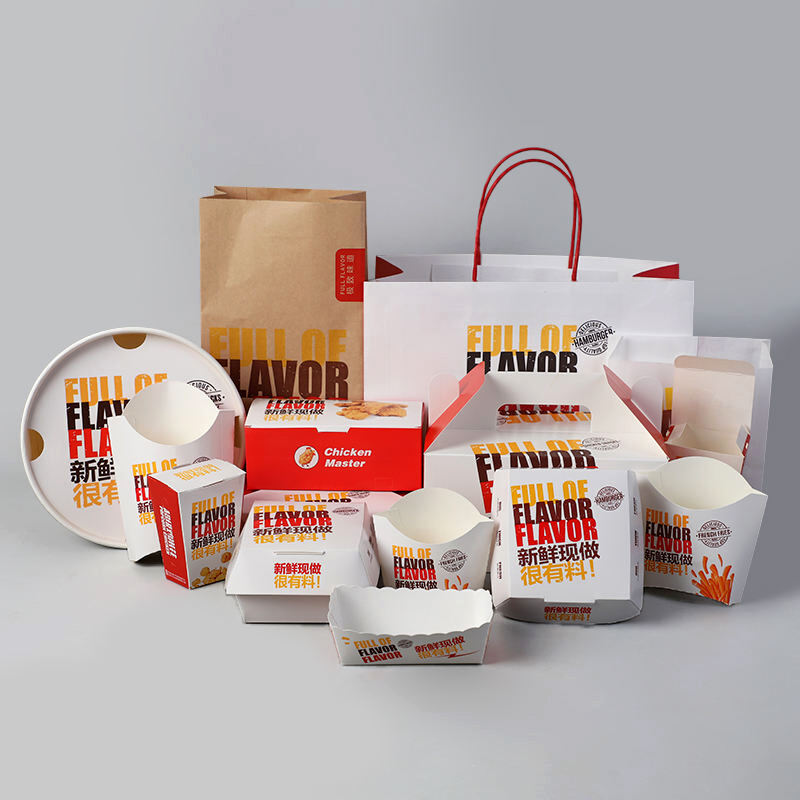The Science Behind Fast Food Container Materials
The material selection for fast food packaging plays a crucial role in maintaining food quality, safety, and environmental sustainability. From traditional paper-based solutions to innovative biodegradable alternatives, the choice of packaging material directly impacts both the consumer experience and business operations. Today's fast food packaging must balance multiple factors including temperature retention, moisture resistance, cost-effectiveness, and environmental impact.
Primary Materials in Modern Food Service Packaging
Paper-Based Solutions
Paper and cardboard remain the cornerstone of fast food packaging, offering versatility and cost-effectiveness. These materials excel in grease resistance when properly treated and provide excellent printability for branding. Modern paper-based fast food packaging incorporates specialized coatings that enhance moisture resistance while maintaining the material's natural biodegradability. The thermal properties of paper-based containers make them ideal for hot foods, as they provide adequate insulation without retaining excessive moisture.
Recent innovations in paper-based fast food packaging include multi-layer solutions that combine different grades of paper to optimize performance. These advanced structures can better maintain food temperature while preventing sogginess, a common challenge in traditional paper containers. Additionally, manufacturers have developed new sustainable coating technologies that replace traditional plastic films, making these packages more environmentally friendly while maintaining their functional properties.
Plastic Polymers and Their Applications
Plastic materials in fast food packaging offer unique advantages in terms of durability and moisture barrier properties. From PET containers to polypropylene cups, each polymer type serves specific functions in the food service industry. Modern plastic fast food packaging incorporates advanced features like oxygen barriers and temperature resistance, ensuring food stays fresh and maintains its intended serving temperature.
The evolution of plastic packaging has led to the development of lighter yet stronger materials that reduce transportation costs while improving performance. Manufacturers now produce thin-wall containers that use less material while maintaining structural integrity. These innovations in plastic fast food packaging help businesses optimize their packaging costs while ensuring product quality.
Performance Characteristics of Different Materials
Temperature Management Capabilities
The thermal performance of fast food packaging materials significantly impacts food quality and customer satisfaction. Foam-based containers offer superior insulation properties, maintaining hot foods at desired temperatures for extended periods. Alternatively, specialized paper-based solutions with air-pocket designs provide effective temperature control while addressing environmental concerns.
Advanced composite materials in modern fast food packaging combine multiple layers to optimize temperature retention. These materials often incorporate reflective barriers or insulating air gaps, ensuring hot foods stay hot and cold items remain chilled. The latest innovations focus on achieving these performance goals while minimizing material usage and environmental impact.
Moisture and Grease Resistance
Different packaging materials exhibit varying levels of moisture and grease resistance, crucial factors in fast food applications. High-performance paperboard with specialized coatings provides excellent grease barrier properties while maintaining recyclability. Plastic-based solutions offer superior moisture resistance but may face challenges in terms of environmental sustainability.
Innovative coating technologies have revolutionized how traditional materials handle moisture and grease in fast food packaging. Bio-based barriers and natural additives now provide effective protection while addressing environmental concerns. These advancements allow packaging to maintain structural integrity and food quality throughout the service life.

Environmental Impact and Sustainability Considerations
Biodegradable Options
The fast food industry increasingly embraces biodegradable packaging materials to address environmental concerns. New generations of plant-based materials offer comparable performance to traditional options while reducing environmental impact. These sustainable alternatives maintain food quality standards while providing end-of-life benefits through composting or natural degradation.
Recent developments in biodegradable fast food packaging include materials derived from agricultural waste and renewable resources. These innovations provide viable alternatives to conventional packaging while supporting circular economy principles. The industry continues to invest in research to improve the performance and cost-effectiveness of these sustainable solutions.
Recycling and Waste Management
Material selection significantly influences the recyclability and waste management aspects of fast food packaging. Single-material designs facilitate easier recycling, while composite structures may present challenges in waste processing. The industry increasingly adopts designs that consider the entire lifecycle of packaging materials.
Modern fast food packaging often incorporates clear recycling instructions and material identification to improve waste management outcomes. Manufacturers develop solutions that balance performance requirements with recyclability, helping businesses meet sustainability goals while maintaining operational efficiency.
Future Trends in Fast Food Packaging Materials
Smart Packaging Technologies
Emerging smart materials are revolutionizing fast food packaging with features like temperature indicators and freshness monitoring. These innovations help ensure food safety and quality while providing valuable information to consumers and businesses. The integration of smart technologies continues to expand the functionality of packaging materials.
Advanced materials in development include self-cooling containers and time-temperature indicators that enhance the consumer experience. These technologies represent the next frontier in fast food packaging, combining traditional material performance with digital innovation.
Material Innovation and Development
Ongoing research in packaging materials focuses on enhancing performance while reducing environmental impact. New composite materials and hybrid solutions offer improved functionality without compromising sustainability goals. The industry continues to invest in developing materials that meet evolving consumer and regulatory requirements.
Future developments in fast food packaging materials will likely focus on renewable resources and circular economy principles. These innovations aim to maintain or exceed current performance standards while addressing growing environmental concerns.
Frequently Asked Questions
What materials provide the best temperature retention for hot foods?
Multi-layer composite materials and foam-based containers typically offer superior temperature retention for hot foods. Advanced paper-based solutions with air-pocket designs also provide excellent insulation while being more environmentally friendly.
How do different materials impact food freshness and quality?
Material selection affects moisture control, gas permeability, and temperature maintenance, all crucial for food freshness. High-performance materials with proper barrier properties help maintain food quality by preventing moisture loss or gain and protecting against external contamination.
Are sustainable packaging materials as effective as traditional options?
Modern sustainable materials have significantly improved in performance, often matching or exceeding traditional packaging solutions. Recent innovations in bio-based materials and coating technologies ensure that environmentally friendly options can effectively meet fast food packaging requirements.
